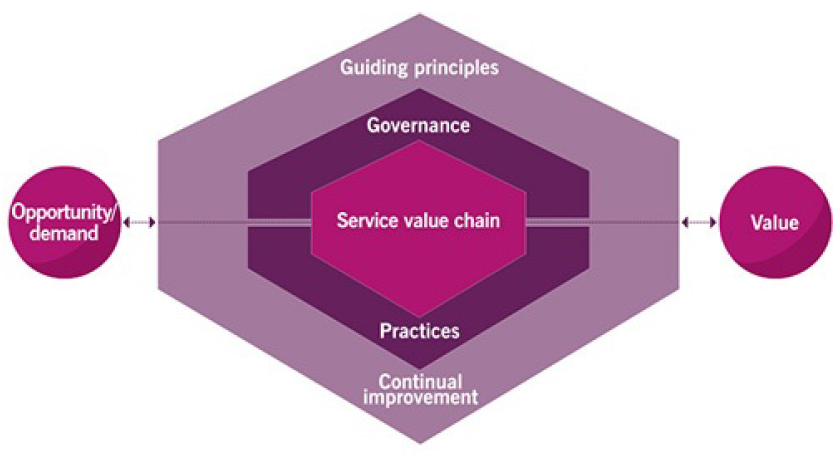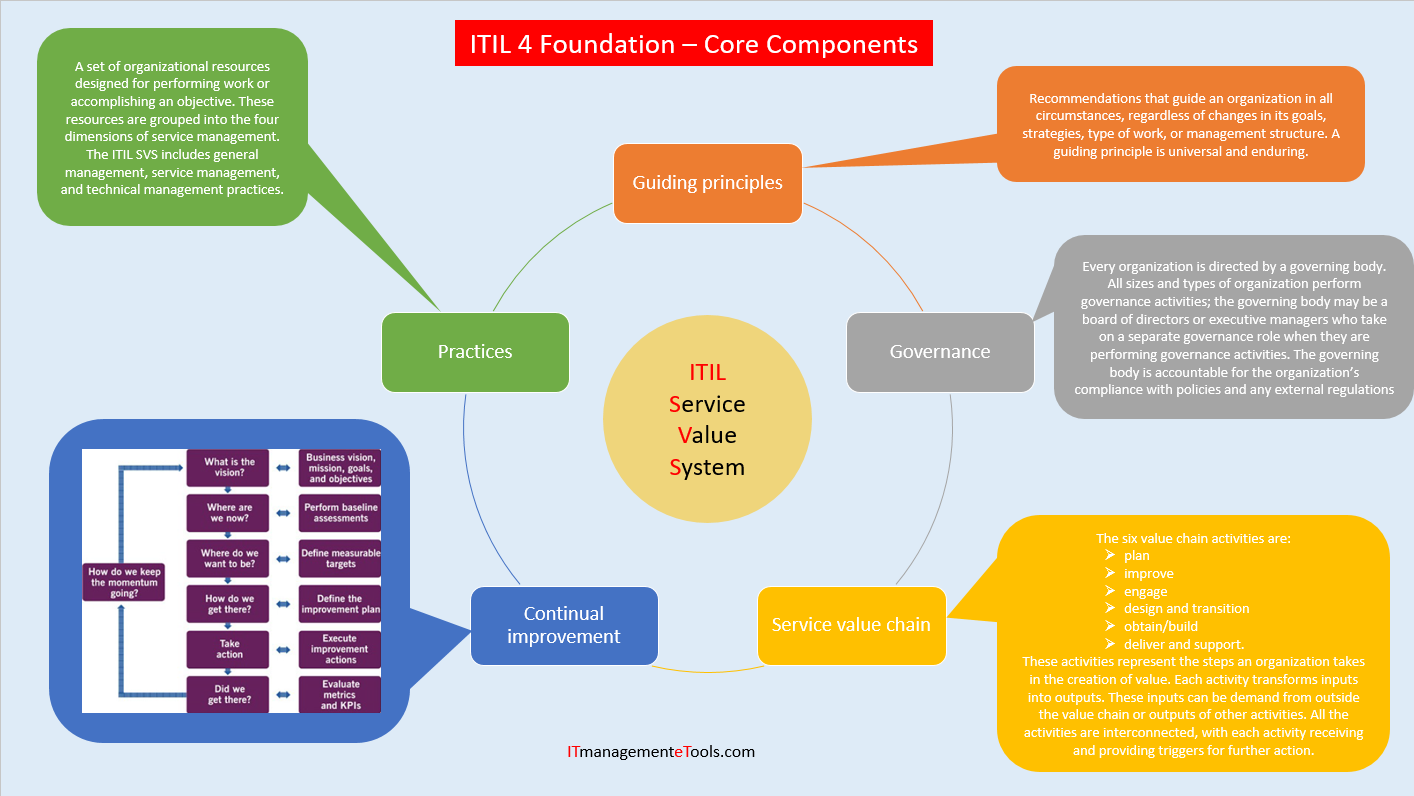ITIL 4 Foundation: Core Components of ITIL SVS
The core components are the structure of the ITIL SVS (Service Value System) which are:
- ITIL service value chain
- ITIL practices
- ITIL guiding principles
- Governance
- Continual improvement

The purpose of the SVS is to ensure that the organization continually co-creates value with all stakeholders through the use and management of products and services. The ITIL SVS describes how all the components and activities of the organization work together as a system to enable value creation. Each organization’s SVS has interfaces with other organizations, forming an ecosystem that can in turn facilitate value for those organizations, their customers, and other stakeholders.
The key inputs to the SVS are opportunity and demand. Opportunities represent options or possibilities to add value for stakeholders or otherwise improve the organization. Demand is the need or desire for products and services among internal and external consumers. The outcome of the SVS is value, that is, the perceived benefits, usefulness, and importance of something. The ITIL SVS can enable the creation of many different types of value for a wide group of stakeholders.
The ITIL SVS describes how all the components and activities of the organization work together as a system to enable value creation. These components and activities, together with the organization’s resources, can be configured and reconfigured in multiple combinations in a flexible way as circumstances change, but this requires the integration and coordination of activities, practices, teams, authorities and responsibilities, and all parties to be truly effective.
The architecture of the ITIL SVS specifically enables flexibility and discourages siloed working. The service value chain activities and the practices in the SVS do not form a fixed, rigid structure. Rather, they can be combined in multiple value streams to address the needs of the organization in a variety of scenarios. Organizations should be able to define and redefine their value streams in a flexible, yet safe and efficient manner. This requires continual improvement activity to be carried out at all levels of the organization; the ITIL continual improvement model helps to structure this activity. Finally, the continual improvement and overall operation of an organization are shaped by the ITIL guiding principles. The guiding principles create a foundation for a shared culture across the organization, thus supporting collaboration and cooperation within and between the teams, and removing the need for constraints and controls previously provided by silos.
With these components, the ITIL SVS supports many work approaches, such as Agile, DevOps and Lean, as well as traditional process and project management, with a flexible value-oriented operating model.

Interesting Management
-

Part 1: A good manager, better team motivation, better team productivity, better team results
When you are managing a team, “how to be a good manager” is the “must”...
-

Report optimization, increase your time management
As manager, I am doing many reports, even when I was an ITIL consultant, I still needed to do many reports...
-

Tools to get your ITIL intermediate certifications, the missing 15 points for the ITIL 4 Managing Professional
ITIL V3 is going to be obsolete...
-

The importance of the first customer meeting for the service
Managing an IT service when I start a new company is not an easy task, particularly true, if the service...



